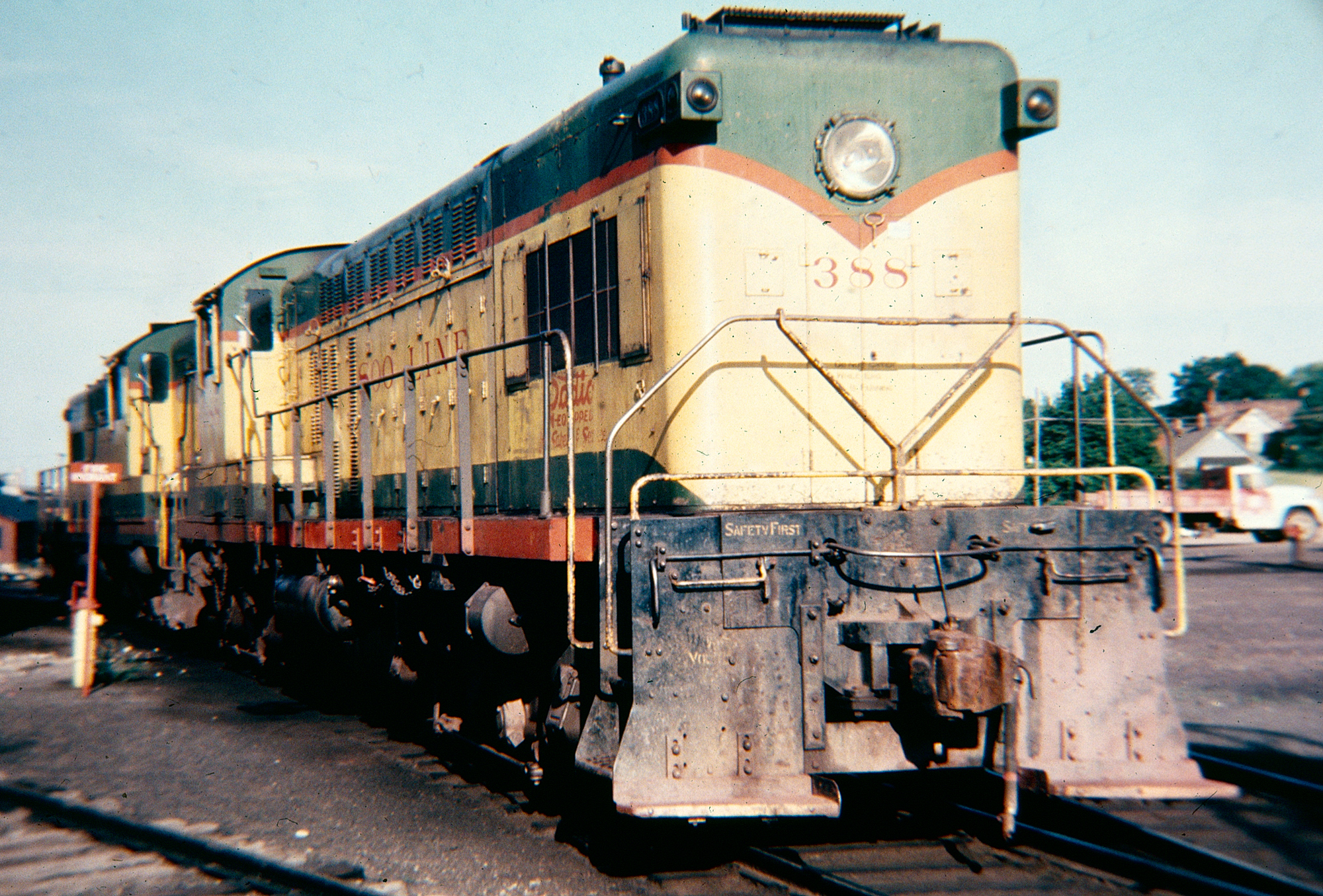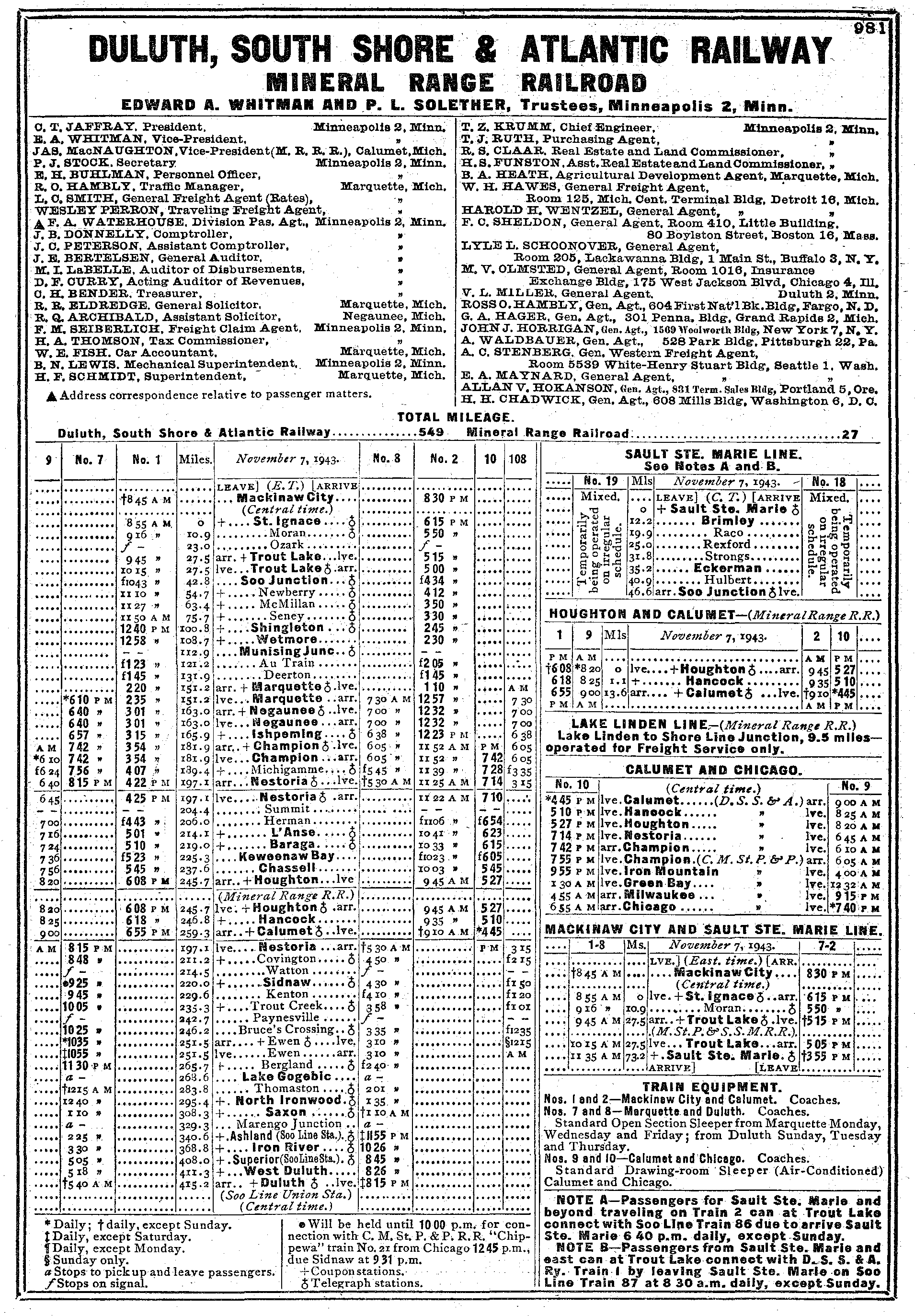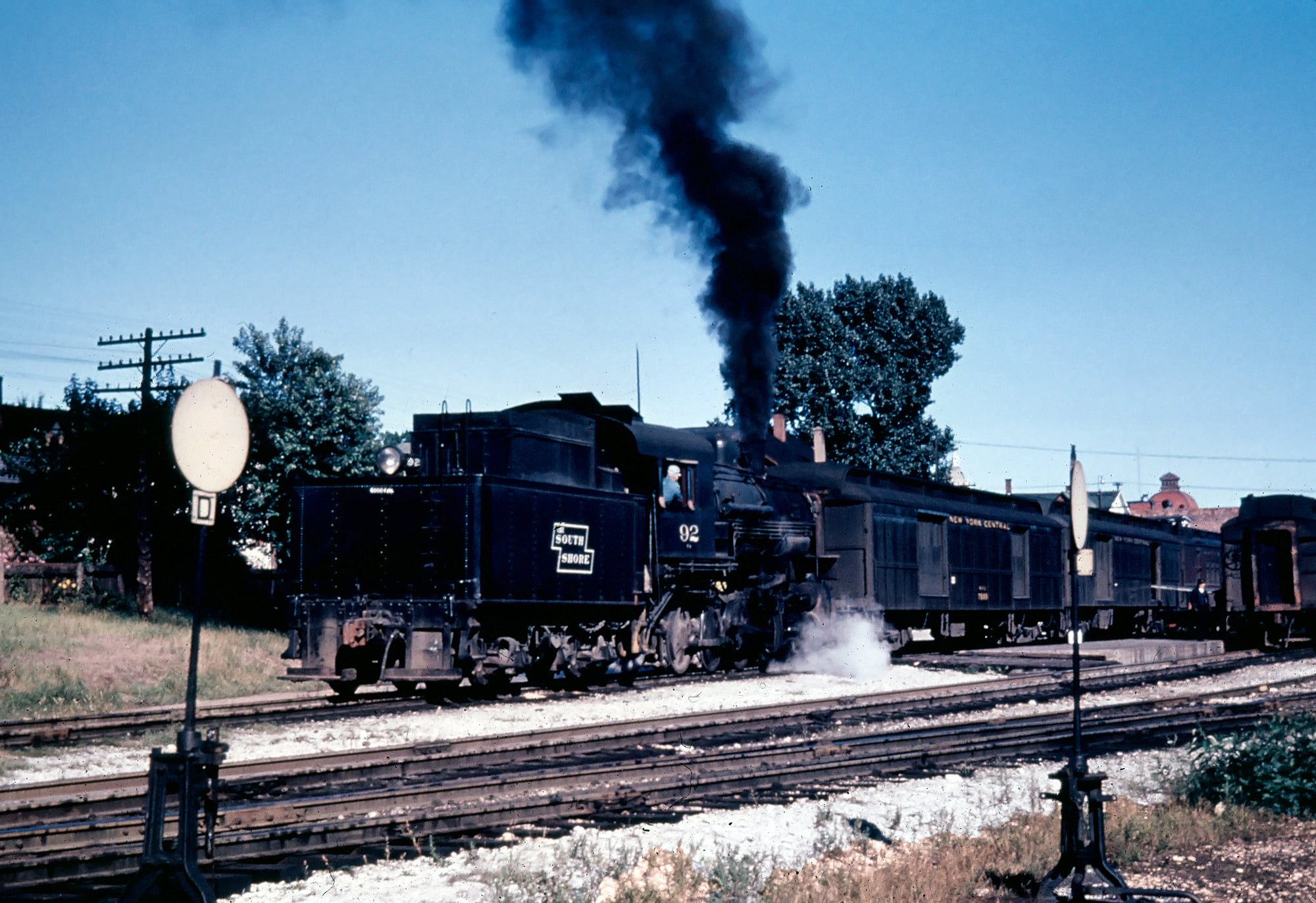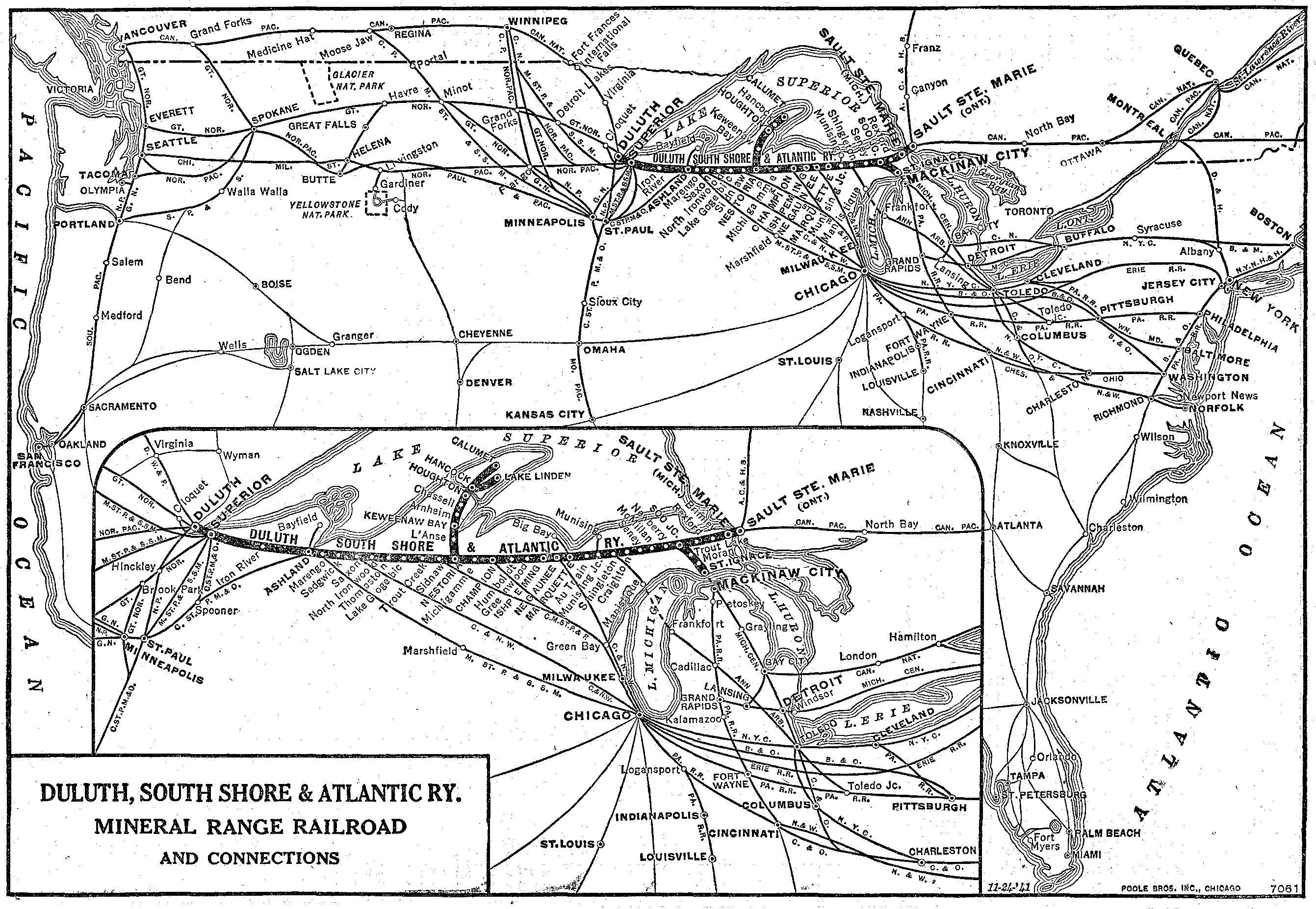Duluth, South Shore, and Atlantic Railway: Map, Roster, Timetables
Published: July 29, 2024
By: Adam Burns
The Duluth, South Shore, and Atlantic Railway (DSS&A) is a storied railway that played a critical role in the development of the Upper Peninsula of Michigan and northeastern Wisconsin.
Known for its rugged routes and significant contributions to local economies, the railway has an enduring legacy that spans the late 19th and early 20th centuries.
The DSS&A has a rich history that traces back to its first predecessor, which began operations in 1855. The railroad came under the control of the Canadian Pacific in 1888 and retained its independent nameplate while operating as a CP subsidiary until 1960/1961.
Since 2001, the remnants of the DSS&A's operating trackage have been managed by the Canadian National (CN). Today, short stretches of the original routes are still actively used, including segments between Trout Lake and Munising Junction, from Ishpeming to Baraga, and between White Pine and Marengo Junction.
This article delves into the history of the DSS&A, exploring its origins, expansion, challenges, and eventual assimilation into larger railway systems.
 A pair of Soo Line AS616s sit outside the roundhouse at Marquette, Michigan circa 1965. #388 was built as Duluth, South Shore & Atlantic #204. American-Rails.com collection.
A pair of Soo Line AS616s sit outside the roundhouse at Marquette, Michigan circa 1965. #388 was built as Duluth, South Shore & Atlantic #204. American-Rails.com collection.Origins and Early Years
The 1850s saw the dawn of hematite iron ore mining in the Upper Peninsula hills above Marquette, sparking numerous plans for railroads. These rail lines aimed to connect mines, booming towns, and the Great Lakes' shores.
While the majority of the Upper Peninsula's iron ore and Keweenaw copper were shipped across the United States via lake boats, the incapability of water-based shipping during harsh winters spurred railroad promoters to develop multiple railway projects in the region.
By the 1870s, a complex network of corporate charters and small spur lines sprang up in the central Upper Peninsula, primarily to transport iron and copper ore from the mines to smelters and docks along Lake Superior and Lake Michigan.
From 1879 to 1881, venture capitalists spearheaded the creation of the Detroit, Mackinac & Marquette (DM&M) Railroad, a standard-gauge mainline that stretched from St. Ignace at the Straits of Mackinac to Marquette on Lake Superior.
This roadway included a remarkably straight 25-mile east-west section, known today as the "Seney Stretch." Despite receiving over 1.3 million acres of Michigan state land—amounting to almost 9,000 acres per mile—as a construction subsidy, the DM&M fell into receivership by 1886.
James McMillan, a venture capitalist from Detroit, stepped in to reorganize the DM&M. He quickly consolidated the DM&M with many smaller Upper Peninsula railroads during the early 1880s. In December 1886, these lines merged to form the Duluth, South Shore, and Atlantic Railway, marking the birth of a significant player in the regional rail industry.
Purpose and Early Operations
The primary purpose of the DSS&A was to facilitate the transport of timber, iron ore, and other natural resources from the resource-rich Upper Peninsula and northern Wisconsin to markets and ports on the Great Lakes.
The railway's main routes connected the bustling port city of Duluth, Minnesota, with Sault Ste. Marie, Michigan, and points further east. Early operations focused heavily on freight, but passenger services were also an integral part of the railway's operations.
CP Acquisition
In 1888, Canadian Pacific, a transcontinental giant, took control of the Duluth, South Shore & Atlantic Railway (DSS&A). Thanks to CP funding from 1892 to 1894, the DSS&A expanded westward from the Keweenaw Peninsula to Duluth.
The 1890s marked the zenith of the timber industry along the Lake Superior shoreline, closely tied to the DSS&A's new mainline. Initially, the focus was on shipping old-growth white pine. As those supplies dwindled, lumberjacks turned to high-quality hardwoods like sugar maple and later to pulpwoods, such as paper birch and aspen.
System Map (1945)
Peak Years
The arrival of the DSS&A spurred significant economic growth in the Upper Peninsula and northern Wisconsin. Towns and cities along the railway line, such as Marquette and Houghton, experienced rapid development.
The timber industry flourished, as the railway provided an efficient means of transporting lumber to markets. Similarly, the iron ore mined in the region could now reach smelting facilities and industrial centers more efficiently.
At its operational peak in 1911, the DSS&A managed an impressive 623 miles of track—517 miles of mainline and 106 miles of branch lines and trackage rights. The railway boasted 3,121 rolling stock units, including 82 locomotives, 67 passenger cars, 35 cabooses, and 2,957 freight cars.
The pinnacle of DSS&A's freight operations came in 1913, with nearly 1 million short tons (900,000 metric tons) transported, over half of which were forest products. However, by the late 1910s, timber yields began to decline throughout the Upper Peninsula, a downturn that dealt a severe blow to the DSS&A's viability as an independent entity.
From 1920 onwards, the DSS&A's fortunes mirrored those of the broader American railway industry, compounded by challenging business conditions in northern Michigan.
Decline
In 1957, the opening of the Mackinac Bridge, a five-mile-long suspension bridge, provided an all-weather road across the Straits of Mackinac into the Upper Peninsula.
This development led the DSS&A to discontinue its remaining passenger rail service in January 1958. By 1961, the railroad was fully merged with the Minneapolis, St. Paul, and Sault Ste. Marie Railway, better known a the Soo Line - a CP subsidiary.
Timetables (1945)

The DSS&A Today
Historical Significance
The DSS&A holds a significant place in the history of the Upper Peninsula and northern Wisconsin. Its role in facilitating economic growth, particularly in the timber and mining industries, cannot be overstated. The railway connected remote and often isolated communities to broader markets and played a crucial part in the region's development.
Preservation Efforts
Today, efforts to preserve the history and legacy of the DSS&A continue. Historical societies, museums, and railway enthusiasts work to maintain and showcase artifacts, documents, and oral histories related to the railway.
Heritage Railways and Tourism
In some areas, sections of the DSS&A’s former routes have been repurposed as heritage railways, offering tourists a glimpse into the past. These heritage railways serve as living museums, providing opportunities for people to experience rail travel as it was during the heyday of the DSS&A.
Diesel Roster
The DSS&A's relatively small diesel roster consisted primarily of Alco and Baldwin products, which were later folded into Soo Line's system.
| Road Number(s) | Model Type | Builder | Completion Date | Serial Number(s) | Soo Line Numbers |
|---|---|---|---|---|---|
| 100-101 | RS1 | Alco | 5/1945-6/1945 | 73753, 73760 | 100-101 |
| 102-105 | RS1 | Alco | 12/1946-1/1947 | 75215, 75217-75219 | 102-105 |
| 106-107 | RS1 | Alco | 5/1947, 1/1951 | 75389, 78376 | 106-107 |
| 370-371 | RSC2 | Alco | 11/1949 | 77558-77559 | 370-371 |
| 384-386 | DRS-6-6-1500 | Baldwin | 11/1949 | 74693-74695 | DSS&A 200-202 |
| 387 | DRS-6-6-1500 | Baldwin | 8/1950 | 74716 | DSS&A 203 |
| 204-208 | AS616 | Baldwin | 2/1951 | 75051-75055 | 388-392 |
| 209-210 | AS616 | Baldwin | 8/1952 | 75180-75181 | 393-394 |
| 211 (Built as demonstrator #1600; became #211 on September 13, 1952.) | AS616 | Baldwin | 3/1952 | 75826 | 395 |
| 300-303 | DT-6-6-2000 | Baldwin | 10/1949, 8/1950 | 74668-74670, 74672 | 396-399 |
 Duluth, South Shore & Atlantic 2-8-0 #92 carries out switching in front of the station at Marquette, Michigan in the summer of 1951. A.C. Kalmbach photo. American-Rails.com collection.
Duluth, South Shore & Atlantic 2-8-0 #92 carries out switching in front of the station at Marquette, Michigan in the summer of 1951. A.C. Kalmbach photo. American-Rails.com collection.Conclusion
The Duluth, South Shore & Atlantic may not have ranked among the giants of American railroads
in terms of scale or profit. With its relatively modest routes and mileage, and a brief history, it nonetheless played a crucial role in shaping the economic landscape of the Upper Peninsula of Michigan. During its operational years, the DSS&A was a vital artery for this region, serving the vibrant copper and iron mining areas.
The railway’s network spanned from Duluth, Minnesota, cut through Wisconsin, and reached as far as Sault Ste. Marie, Michigan, with significant branches extending to Calumet and St. Ignace.
It was more than just a transportation route; it was the backbone of commerce and daily life for communities situated along its lines. The residents and businesses of the north country heavily relied on the DSS&A for their economic survival and growth.
For a time, this railway was the indispensable lifeline that connected the Upper Peninsula to broader markets and opportunities.
From its ambitious expansion across the rugged landscapes of the Upper Peninsula and northern Wisconsin to its integration into larger railway systems, the DSS&A played a pivotal role in shaping the region's trajectory.
Recent Articles
-
Tennessee Halloween Train Rides
Oct 16, 25 11:26 AM
Featured here are the best-known Halloween train experiences in Tennessee, what to expect from each, and practical tips for planning your trip. -
Washington 'Whiskey' Train Rides
Oct 16, 25 11:13 AM
Climb aboard the Mt. Rainier Scenic Railroad for a whiskey tasting adventure by train! -
Maryland 'Whiskey' Train Rides
Oct 16, 25 09:48 AM
You can enjoy whiskey tasting by train at just one location in Maryland, the popular Western Maryland Scenic Railroad based in Cumberland.




